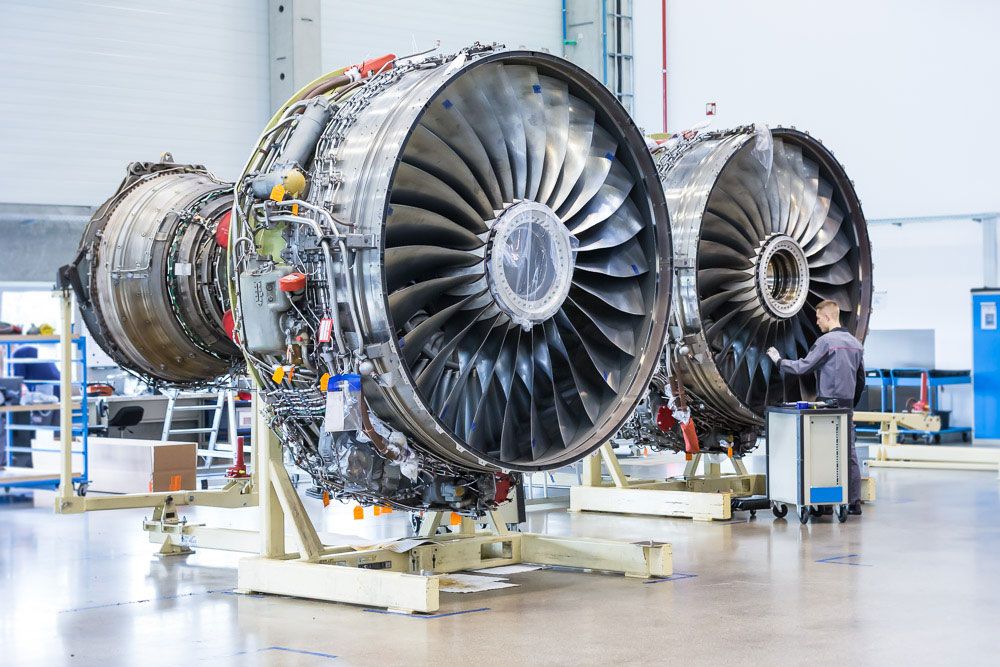
Insights & News
Overhauling in aviation: Definition and process
Published Sunday, July 13, 2025
Overhauling is a critical process in aviation maintenance that involves comprehensively inspecting, repairing, and restoring aircraft components to a like-new condition. This meticulous procedure ensures the safety, reliability, and optimal performance of aircraft systems. In this article, we delve into the definition and purpose of overhauls, explore the key steps involved in the overhaul process, and examine the various types of overhauls performed on different components of an aircraft.
Summary:
- Definition and purpose of aviation overhauls
- The overhaul process in aviation
- Types of aviation overhauls
Definition and purpose of aviation overhauls
Key differences between overhauls and routine maintenance
Overhauls are much more comprehensive than regular inspections and maintenance. While routine maintenance focuses on checking and servicing individual components, overhauls involve completely disassembling, inspecting, repairing, and reassembling major systems.
The goal of an overhaul is to restore the component to a "like-new" condition that meets original tolerances and performance standards. In contrast, regular maintenance aims to identify and fix specific issues to keep the aircraft operational between overhauls.
Overhauls are typically required at mandated intervals based on factors like flight hours, cycles, or calendar time. Routine inspections and maintenance are performed more frequently to detect and address any developing issues before they necessitate an overhaul.
Regulatory requirements for aviation overhauls
Aviation overhauls are subject to strict regulatory oversight to ensure the highest standards of safety and airworthiness. The Federal Aviation Administration (FAA) in the United States and other national aviation authorities establish the rules and guidelines governing overhaul procedures.
These regulations dictate the intervals at which overhauls must be performed, based on factors such as flight hours, cycles, or calendar time. They also specify the approved methods, materials, and documentation required for each stage of the overhaul process.
The overhaul process in aviation
Inspection and disassembly procedures
The initial stages of an aircraft overhaul involve a comprehensive inspection to assess the condition of components. This requires a systematic disassembly process to access internal systems.
Inspection begins with a thorough visual examination, looking for signs of wear, corrosion, or damage. Non-destructive testing techniques like X-ray, ultrasound, or eddy current may also be used to detect hidden flaws without damaging components.
Repair, replacement, and reassembly
The inspection findings dictate the next crucial steps in the overhaul process: repairing or replacing the identified defective parts. Technicians meticulously rectify any damage, cracks, corrosion, or wear to restore the components to their original specifications. When a part is beyond repair, a suitable replacement is installed to ensure optimal performance and longevity.
Reassembly is the final stage where all the restored components are carefully put back together. Technicians follow precise manual instructions, torque settings, and tolerances to reconstruct the overhauled unit. Proper reassembly is critical to ensure all parts function harmoniously and meet the stringent airworthiness standards.
Testing and quality assurance measures
The final stages of an overhaul involve rigorous testing and quality assurance to verify the airworthiness of the refurbished component. Technicians conduct operational checks, performance tests, and non-destructive inspections to identify any remaining deficiencies or anomalies.
These tests are performed under strict adherence to manufacturer specifications and regulatory guidelines. Precise measurements are taken to confirm that the overhauled part meets the required tolerances for optimal performance and safety.
Quality assurance specialists meticulously review all overhaul documentation, ensuring that each step of the process has been properly executed and recorded. Only when the component has successfully passed all tests and quality checks is it approved for return to service.
Types of aviation overhauls
Engine overhauls: Major and top overhauls
As aircraft engines accumulate flight hours and cycles, wear and tear can degrade performance and reliability. Overhauls restore these engines to optimal condition, but the extent of work required may vary. This is where the distinction between major and top overhauls becomes important.
A major overhaul is the most comprehensive option. The engine is completely disassembled for detailed inspection, repair, and reassembly to original tolerances. Major overhauls are typically required when an engine reaches its recommended time between overhauls (TBO) or exhibits significant performance issues.
In contrast, a top overhaul is a less extensive procedure. It focuses on the "top end" components like cylinders and valves without disassembling the entire engine. Top overhauls address more localized wear and can extend the time before a full major overhaul is needed.
Airframe and component-specific overhauls
Beyond engines, overhauls are also performed on other critical aircraft systems and components to maintain airworthiness. The airframe itself undergoes periodic heavy maintenance checks, often referred to as "D-checks" or "C-checks" depending on the aircraft type. During these comprehensive inspections, the entire airframe is examined for corrosion, fatigue, and damage. Repairs and modifications are made as necessary to ensure structural integrity.
However, not all components are overhauled on the same schedule as the airframe. Many parts have their own specific overhaul intervals based on factors like flight cycles or calendar time. For example, landing gear typically requires overhaul every 10 years or 18,000 cycles, while emergency equipment like slides and rafts are serviced on a calendar basis.
In conclusion, overhauls are a critical maintenance process in aviation that restore aircraft components to a like-new condition, ensuring safety, reliability, and optimal performance. Through comprehensive inspection, repair, and reassembly procedures, overhauls extend the service life of aircraft systems and maintain compliance with stringent airworthiness standards. For operators seeking a streamlined solution for their aircraft maintenance needs, Orizair offers a simple, friendly platform to find available private jets in the EU in real-time, with the added benefit of automatic carbon offset through tree planting investments.
Book a private flight
With Orizair, discover hundreds of available flights to reach your destination the green way.
Find your destinationAt Orizair, we integrate sustainability into private aviation by automatically offsetting the carbon emissions of every flight and collaborating with committed partners like Treesition. Discover our commitment.